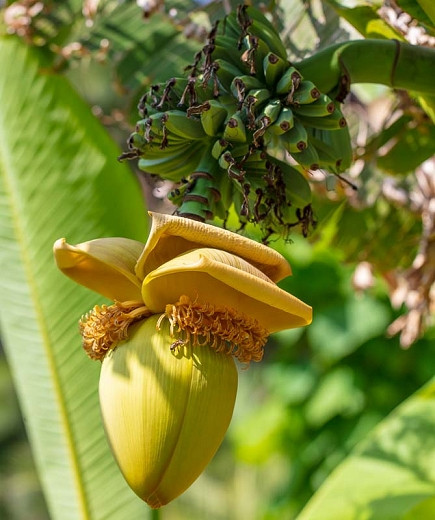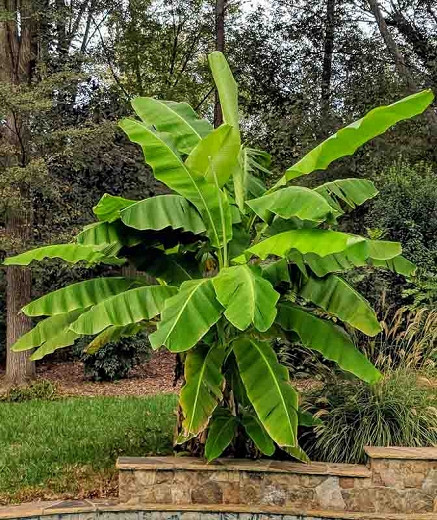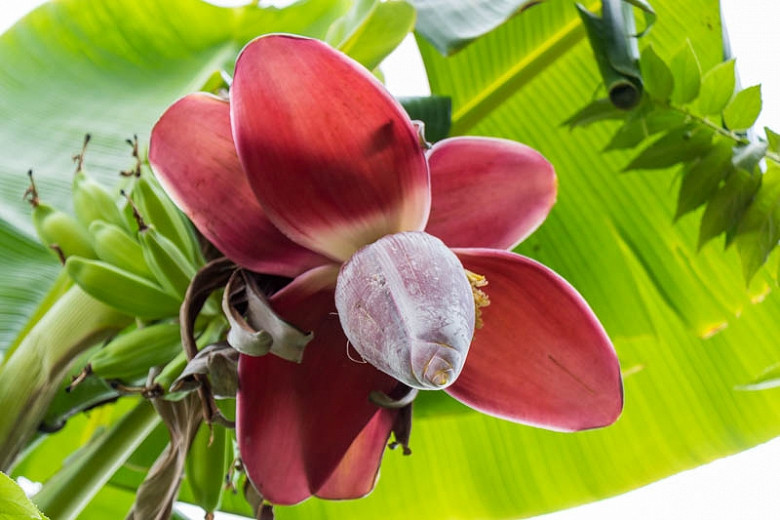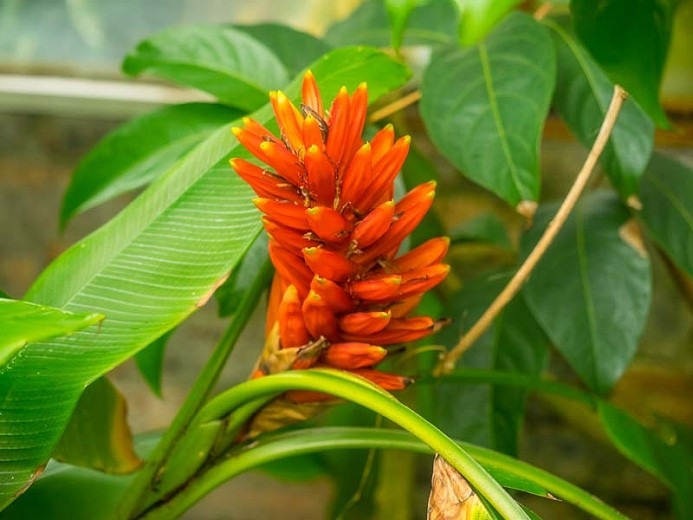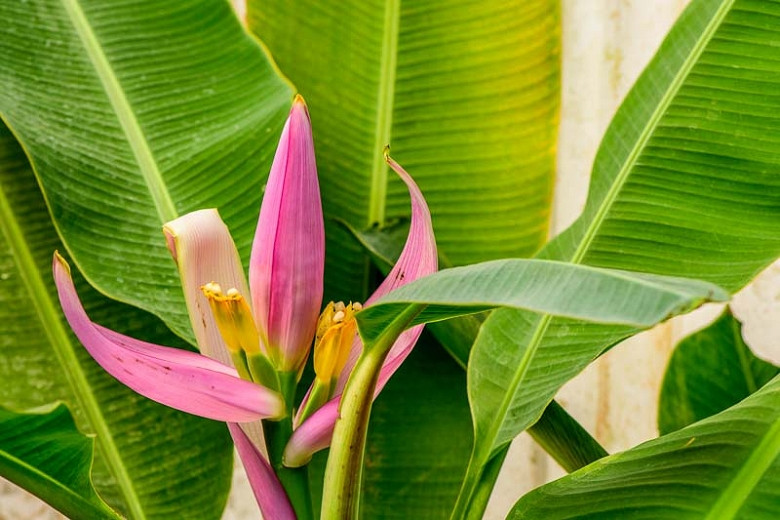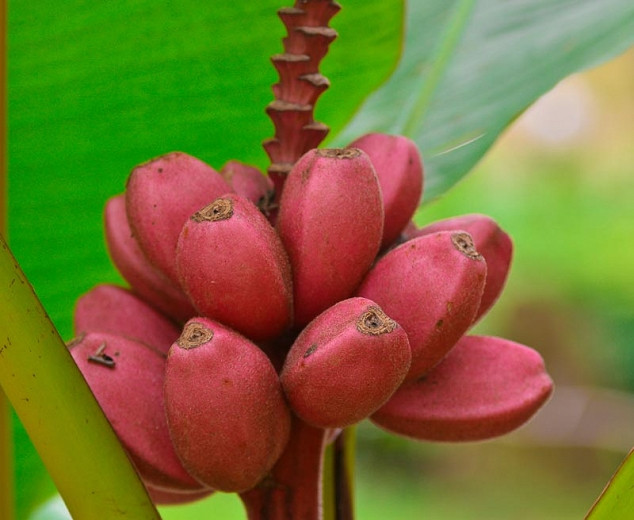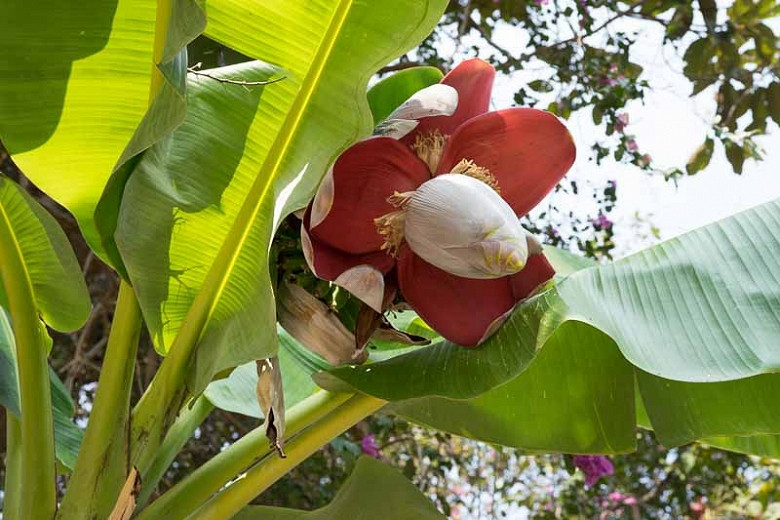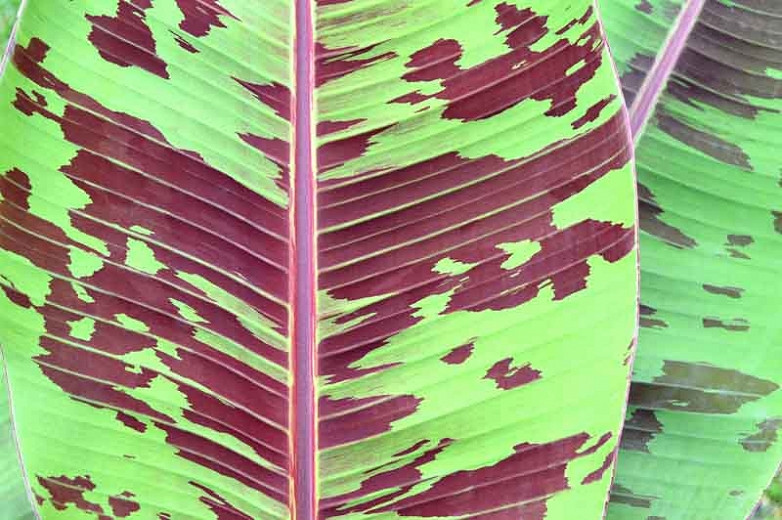Musa basjoo (Japanese Banana)
Incredibly architectural, award-winning Musa basjoo (Japanese Banana) is a fast-growing, suckering evergreen perennial boasting huge, arching, paddle-shaped leaves, up to 10 ft. long (3 m). Large cream to yellow flowers may appear in summer on mature plants.
Incredibly architectural, award-winning Musa basjoo (Japanese Banana) is a fast-growing, suckering evergreen perennial boasting huge, arching, paddle-shaped leaves, up to 10 ft. long (3 m). Large cream to yellow flowers may appear in summer on mature plants. They are followed by inedible green fruit. The leaf sheaths overlap to form a trunk-like pseudostem. Each pseudostem has a limited lifespan. It only lives as long as it takes it to flower and produces fruit. After flowering and fruiting, the pseudostem dies, but the roots push out new shoots (banana pups) which form new pseudostems. Grown for its lush and dramatic foliage, this fascinating hardy banana species adds an exotic splash to gardens and containers.
- Recipient of the prestigious Award of Garden Merit of the Royal Horticultural Society.
- Grows up to 10-15 ft. tall (300-450 cm) and 6-8 ft. wide (180-240 cm).
- Performs best in full sun in humus-rich, well-drained soils. Best growth occurs with consistently moist soils that do not dry out. Banana trees do not do well in drought conditions since they need to be watered often for proper growth. Shelter from the wind to prevent the leaves from being damaged. Fertilize plants regularly during the growing season.
- A great choice for wall-side borders, containers, or Mediterranean gardens where it will proudly stand out.
- Disease free. Keep an eye out for glasshouse red spider mite, mealybugs, and aphids.
- In USDA Zones 5-8, cut stems back to 2 ft. (60 cm) after the frost kills the leaves, wrap them with burlap, bubble wrap, or plastic and apply a thick mulch to the ground to protect the roots. If grown in a container, bring your container indoors in fall before first frost and place it in a sunny room with reduced water and fertilization. Alternatively, trim the foliage and store your container in the basement in a cool frost-free spot, providing just an occasional touch of moisture in winter to prevent the soils from totally drying out.
- Propagate by seed as soon as ripe at 21-24°C (70-75°F); presoak spring sown seed for 24 hours. Separate suckers in early spring, removing older leaves or divide established clumps every five years.
- Native to China and not Japan as previously cited.
Requirements
| Hardiness | 5 – 11 |
|---|---|
| Heat Zones | 8 – 11 |
| Climate Zones | 4, 5, 6, 7, 8, 9, 14, 15, 16, 17, 18, 19, 20, 21, 22, 23, 24, H1, H2 |
| Plant Type | Fruit, Perennials |
| Plant Family | Musa – Bananas |
| Exposure | Full Sun |
| Season of Interest | Spring (Early,Mid,Late)Summer (Early,Mid,Late)FallWinter |
| Height | 10' – 15' (3m – 4.5m) |
| Spread | 6' – 8' (180cm – 240cm) |
| Spacing | 72″ – 96″ (180cm – 240cm) |
| Water Needs | Average |
| Maintenance | Average |
| Soil Type | Chalk, Loam, Sand |
| Soil pH | Acid, Alkaline, Neutral |
| Soil Drainage | Well-Drained |
| Characteristics | Plant of Merit, Showy, Evergreen, Fruit & Berries |
| Garden Uses | Beds and Borders, Patio and Containers, Wall-Side Borders |
| Garden Styles | Mediterranean Garden |
